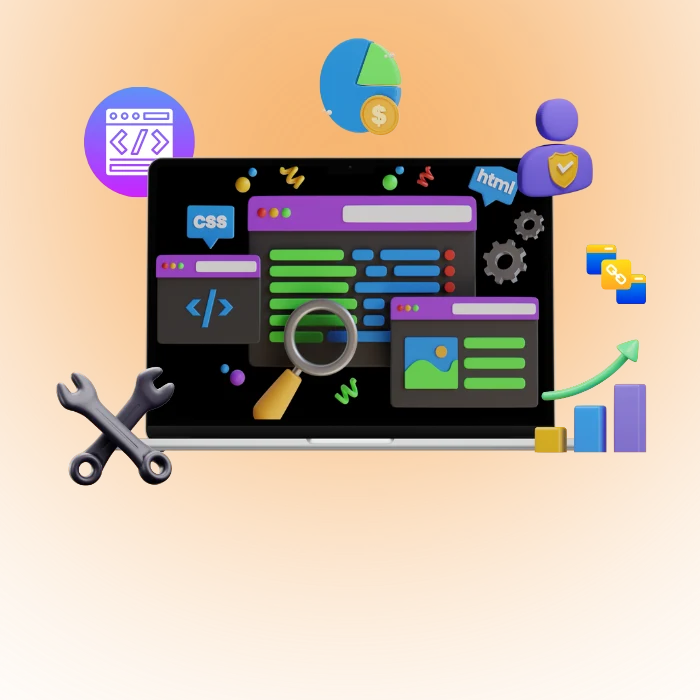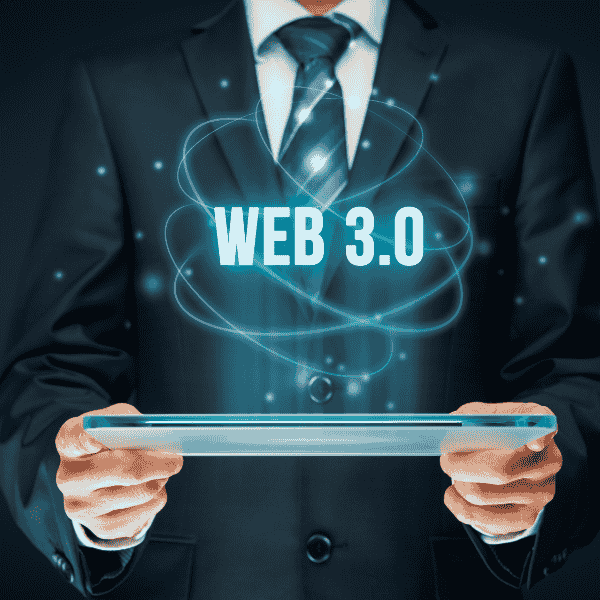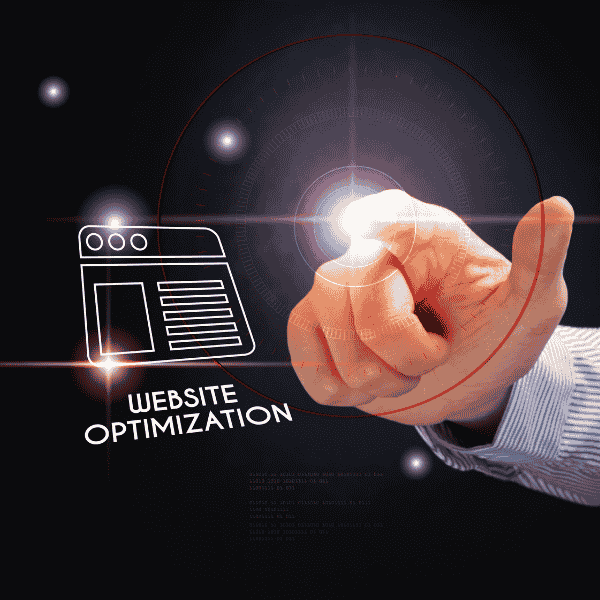What Is Python Web Development and Its Core Advantages
Python fits product teams that want to move fast without gambling on brittle stacks. Delivery improves through clear syntax, rich libraries, and frameworks that cover daily needs such as auth, forms, migrations, and admin. Modern ASGI support unlocks efficient concurrency for I/O-heavy workloads and streaming responses.
Defining Python’s Role in Modern Web Solutions
Teams reach for Python when building APIs that orchestrate data, dashboards that surface insights, and internal tools that change weekly. Framework batteries shorten the path to usable screens, while typed models and schema docs keep partnerships predictable. Async capabilities let apps call other services, persist results, then stream updates without blocking threads.
Why Python Excels for Scalable Applications
Scale arrives through a clean split between application code and ASGI servers. Uvicorn handles HTTP and WebSockets with minimal ceremony, while Granian offers a Rust-based option for higher headroom on the same nodes. Horizontal pods stay simple because the interface standardizes around ASGI.
Key Features Driving Developer Adoption
Readable code reduces onboarding friction, strong docs steady new hires, and tooling lifts baseline quality. Current survey writing shows FastAPI gaining share among API builders in 2025, with Django and Flask still prominent for full-stack and lightweight builds. That balance mirrors what many product teams report this year
“Move new services to ASGI unless hard constraints say otherwise; the ecosystem finally rewards that default.
Why Choose Python for Building Web Applications
Choice often turns on time-to-first-feature and safety under change. Python keeps early steps calm, then scales through types, tests, and observability. Frameworks feel pragmatic rather than flashy, which suits teams measured by customer outcomes, not only by benchmarks or release notes.
Simplified Syntax for Faster Development
Readable syntax helps smaller squads and larger departments. Code reviews get shorter because intent shows up quickly, which frees hours for design questions. Type hints sharpen editor help and catch mismatches before deployment, while auto-generated docs keep contracts visible for partners and testers who validate scenarios during sprints.
Extensive Library Support for Flexibility
Libraries cover queues, caching, payments, storage, search, and model inference. When projects need AI, teams expose inference behind FastAPI routes with little glue, then document them through OpenAPI so client apps stay aligned during iterations that land weekly. Dependency tools like uv reduce packaging sprawl during growth.
Scalability for Enterprise Needs
High traffic paths benefit from async handlers plus efficient DB access. ASGI servers use event loops for better concurrency on I/O, while background workers handle compute-bound tasks. Upgrades remain feasible because Django and FastAPI track modern Python versions and keep migration guidance visible in docs.
Community Support for Ongoing Innovation
Docs, blogs, and IDE features arrive steadily. JetBrains highlights framework adoption through surveys, while PyCharm improves endpoint tooling for mounted FastAPI apps, which helps during refactors in multi-app repos. That attention keeps developer experience consistent across teams.
Top Python Frameworks for Web Development
Framework choice follows scope, team skills, and integration needs. Full-stack portals lean toward Django. Smaller services thrive with Flask. API-first builds often choose FastAPI for type-driven contracts. Async-first options like Sanic serve real-time and event-heavy use cases.
Django Features for Rapid Prototyping
Django includes ORM, migrations, templates, forms, and a strong admin. Security middleware ships ready for common risks. Async views and ASGI support broaden concurrency, with ongoing work to expand async coverage deeper in the stack. Releases document changes clearly, which eases upgrades during long projects.
Flask Benefits for Lightweight Projects
Flask keeps a tiny core, then invites extensions as needs appear. Micro-dashboards, glue APIs, and admin tools land quickly because routing feels explicit and templates stay simple. Teams that prefer hand-picked pieces often enjoy Flask since each dependency remains a deliberate choice rather than a preset bundle.
FastAPI Strengths in API Development
FastAPI centers on type hints, which produce validation and OpenAPI docs by default. Async support fits services that orchestrate other APIs or streams. Interactive docs at /docs or /redoc reduce back-and-forth during partner testing and accelerate front-end integration when contracts change between releases.
Comparing Pyramid and CherryPy Use Cases
Pyramid offers flexible configuration patterns that suit custom URL mapping or templating preferences. CherryPy stays minimal with its own server and can power embedded panels or constrained environments. Most teams standardize on Django, Flask, or FastAPI due to ecosystem size and hiring signals shown in surveys.
| Framework | Best fit | Async readiness | Built-ins | Learning curve |
|---|---|---|---|---|
| Django | Full-stack portals | Views and ASGI supported | Admin, ORM, auth | Moderate |
| Flask | Focused micro-apps | Via extensions | Minimal core | Easy |
| FastAPI | Typed, async APIs | Native async | OpenAPI, validation | Easy–Moderate |
| Sanic | Real-time telemetry | Async-first | Lightweight core | Moderate |
Benefits of Python in SaaS and AI Development
SaaS teams value repeatable migrations, steady admin tools, and guarded multi-tenant patterns. AI features integrate through familiar libraries, then publish behind typed endpoints. That combination keeps discovery loops short, while budgets stay predictable as features evolve.
Streamlining SaaS Product Development
Django’s admin accelerates operations dashboards, while migrations manage schema change with discipline. Feature flags and task queues plug in cleanly. Multi-tenant designs use schema separation or constrained keys so data boundaries remain visible to engineers and auditors throughout releases.
Integrating AI for Smarter Web Apps
FastAPI exposes inference endpoints with crisp contracts. Background workers process batch jobs, while vector stores support retrieval use cases. Documentation comes free through OpenAPI, which reduces integration surprises for client teams that ship mobile and web apps against those routes.
Enhancing User Experience with Python
Typed payloads shrink error classes at boundaries. Async handlers keep interfaces responsive during spikes. Observability reveals latency percentiles, so product owners prioritize caching or pagination work with confidence rather than instinct. Teams communicate through dashboards rather than assumptions during planning.
How to Evaluate Python Frameworks for Your Project Requirements
Selection improves when you match domain complexity, team experience, and hosting constraints. Consider async early if your app calls many external services. Confirm ecosystem health for your must-have integrations before you commit to a toolchain.
Matching Framework Strengths with Project Scope
Full-stack portals that demand permissions, audit trails, and CMS-style editing fit Django, since those parts exist already. Narrow APIs feel natural in FastAPI or Flask, where contracts and routing stay compact. Real-time telemetry or push workloads may benefit from Sanic due to async focus across the stack.
Considerations on Performance Scalability and Security
When requests spend time waiting on I/O, prefer ASGI servers such as Uvicorn or Granian. Place a reverse proxy in front if you need TLS termination or routing rules. For security, turn on CSRF and clickjacking protections in Django, then use OAuth2 or JWT utilities in FastAPI for token scopes. Monitor against OWASP categories as features expand.
Developer Experience and Learning Curve
Django gives guardrails that help mixed-experience squads. Flask rewards explicit choices for teams that curate dependencies deliberately. FastAPI aligns with modern type hints, which improves editor feedback and creates accurate docs for partners and QA. IDE features and linters such as Ruff keep feedback loops quick during reviews.
What Are Best Practices in Python Web Development in 2025
Healthy projects combine typed interfaces, clean module boundaries, strong tests, and ASGI-first deployment for I/O-heavy paths. Keep dependencies lean, pin versions, and document service contracts in repositories where partners can find them.
Writing Maintainable Clean Python Code
Adopt type hints across request and response models. Enforce formatting and lint rules with Ruff so signals show up in editors and CI quickly. Organize modules by feature rather than only by layer, which keeps tests close to behaviors people ship each sprint.
Integrating Databases and ORMs Efficiently
Choose ORM paths that match sync or async runtime decisions. With Django, use select_related and prefetch_related to avoid N+1 query patterns. With SQLAlchemy, keep sessions scoped to requests and avoid sharing mutable session objects across concurrent tasks, which prevents subtle race issues.
Securing Python Web Applications
Enable built-in protections first, then add token scopes and rate limits on public endpoints. Django documents defenses for CSRF and clickjacking, while FastAPI shows OAuth2 and JWT recipes with clear examples. Review changes against the OWASP Top 10 during design and backlog grooming so risk does not creep in unnoticed.
Testing Strategies and Debugging Techniques
Use pytest for unit and service tests, Hypothesis for property checks, and Playwright for end-to-end flows that cover critical paths. Measure coverage to guide effort rather than chase perfect numbers. Capture structured logs in CI so flaky behavior tied to time or network gets fixed rather than retried.
How to Deploy and Scale Python Web Applications Seamlessly
Deployment stays predictable with containers or PaaS. Keep state in managed databases and caches. Observe request rate, tail latency, error ratios, and queue depth so on-call engineers react early during traffic spikes rather than after customers report issues.
Hosting Options and Cloud Deployment
Container images based on official sources reduce drift. WSGI apps still deploy well with Gunicorn, while ASGI apps prefer Uvicorn or Granian behind a proxy. Docs from Flask and Django outline Gunicorn recipes, and ASGI sites show typical Uvicorn settings that matter in production.
Using Containers and Microservices Architecture
Break services by capability when failure domains differ or release cadence diverges. Keep images lean and scan for CVEs in CI. Health and readiness probes protect rollouts. Package and environment management improve through uv, which consolidates workflows and speeds up dependency tasks across repositories.
Performance Optimization and Scalability Tactics
Profile, then tune. Remove N+1 queries, add caching around hot endpoints, and switch to an async server where I/O dominates latency. Uvicorn gives a solid baseline; Granian offers another path when you need higher concurrency with similar footprints. Test with realistic data rather than micro-benchmarks.
Common Challenges in Python Web Development Projects
Projects stumble when async, database access, and background jobs intersect without clear contracts. People recover faster when limits get baked into designs and tests simulate failure paths rather than only happy paths.
Managing Performance for High Traffic
Bottlenecks cluster around database joins or slow external calls. Size connection pools to match instance resources, set defensive timeouts, and use streaming responses for large payloads. Async stacks swallow bursts more gracefully if drivers and ORMs behave well under concurrent load.
Handling Complex Backend Integrations
Third-party APIs vary in reliability and rate limits. Implement retries with jitter and circuit breakers. Record fixtures in integration tests so vendor changes do not break releases silently. When latency budgets get tight, isolate heavy integrations into workers to protect customer-facing endpoints.
Future Trends in Python Web Development
Trends point toward typed code by default, async everywhere, and Rust partnerships for hot paths. Tooling continues to compress dev loops, which lifts quality across organizations that ship weekly.
Rise of Async Frameworks like Sanic
Real-time dashboards, event streams, and push notifications suit Sanic well because throughput and latency sensitivity dominate the decision. Evaluate ecosystem depth for large scopes, then pilot with targeted endpoints where load characteristics match production reality.
Growing Role of Python in Microservices
ASGI, containers, and fast package management encourage small, well-bounded services. The uv tool centralizes workflows that previously lived across many utilities, which keeps repos consistent and CI faster during dependency tasks.
Impact of AI and ML on Web Solutions
Model-backed features appear in search, recommendations, and summarization. Python remains the easiest place to experiment, then stabilize APIs with types and monitoring. Expect heavier use of typed request models and drift tracking, since these features fail quietly without strong metrics.
How to Select the Right Python Framework for Your Project
Shortlist with one vertical slice rather than bake-off slides. Django fits portals with deep admin needs. FastAPI fits typed APIs that integrate many services. Flask fits curated micro-apps where explicit choices matter most. Sanic fits high-throughput real-time paths. Validate with load tests that mirror real traffic.
What Are the Costs of Python Web Development
Budgets split across build time, hosting, and maintenance. Frameworks with batteries reduce custom code, while async servers lower instance counts for I/O-bound workloads. Upgrades improve performance and memory profiles, which compounds savings across many services during long-running programs.
Conclusion
Python remains steady because teams get speed without chaos. Frameworks cover the basics, ASGI servers handle concurrency, and tooling locks in quality. Start small with a slice, measure latency percentiles, then scale with confidence once contracts and dashboards make behavior visible.
If you want a framework shortlist mapped to your backlog, share your scope, SLOs, and hosting plan. We will propose a pilot slice, a server profile, and a test matrix you can run this week.
FAQ Related to Python Web Development
Which Python framework fits a small MVP with logins and dashboards?
Django works well when you need user accounts, admin, and CRUD quickly because those pieces ship together. Teams avoid glue code and reach production sooner. If your MVP centers on a single public API with typed contracts, FastAPI gets clean docs and strong validation from day one.
Is FastAPI replacing Flask or Django in 2025?
FastAPI adoption grew strongly this year, driven by API-first work and type-hint ergonomics. That rise does not erase Django’s full-stack strength or Flask’s minimal flexibility. Many organizations choose by purpose: Django for portals, FastAPI for public APIs, Flask for curated micro-apps.
Do we need ASGI for every new service?
ASGI improves I/O concurrency and fits modern traffic patterns. If an existing WSGI app meets its SLOs, keep it stable until a feature or performance reason appears. New builds often default to Uvicorn or Granian behind a proxy because configuration stays simple.
What security steps should come first in Python web apps?
Enable framework defaults such as CSRF and clickjacking defenses in Django. For APIs, deploy OAuth2 or JWT with short-lived tokens and scoped permissions in FastAPI. Rate-limit public endpoints, then review against OWASP categories during design.
How do we structure tests without slowing CI?
Start with pytest unit and contract tests, then add Playwright for a few end-to-end paths. Use Hypothesis where parsers or pure functions need deep input coverage. Parallelize the suite, record flaky behavior with logs, and measure coverage to identify gaps rather than chase a single number.






